|
|
 |
 |
|






|
 |
|
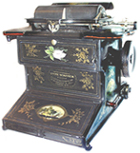 March 1, 1873–E. Remington and Sons, of Ilion, New York, begin the manufacture of the first practical typewriter. The heavy black clunkers soon become fixtures in offices across the country. The patent (U.S. 79,265) was sold for $12,000 to Densmore and Yost, who made an agreement with E. Remington and Sons (then famous as a manufacturer of sewing machines), to commercialize what was known as the Sholes and Glidden Type-Writer. The Type-Writer introduced the QWERTY keyboard and the success of the follow-up Remington No. 2 of 1878 (the first typewriter to include both upper and lower case letters via a shift key) led to the popularity of the QWERTY layout. In 1886, E. Remington and Sons sold its typewriter business to the Standard Typewriter Manufacturing Company, Inc. Included were the rights to use the Remington name. In 1902, Standard Typewriter changed its name to Remington Typewriter Company. It would be another half-century before electric typewriters make their appearance. March 1, 1873–E. Remington and Sons, of Ilion, New York, begin the manufacture of the first practical typewriter. The heavy black clunkers soon become fixtures in offices across the country. The patent (U.S. 79,265) was sold for $12,000 to Densmore and Yost, who made an agreement with E. Remington and Sons (then famous as a manufacturer of sewing machines), to commercialize what was known as the Sholes and Glidden Type-Writer. The Type-Writer introduced the QWERTY keyboard and the success of the follow-up Remington No. 2 of 1878 (the first typewriter to include both upper and lower case letters via a shift key) led to the popularity of the QWERTY layout. In 1886, E. Remington and Sons sold its typewriter business to the Standard Typewriter Manufacturing Company, Inc. Included were the rights to use the Remington name. In 1902, Standard Typewriter changed its name to Remington Typewriter Company. It would be another half-century before electric typewriters make their appearance.
Read the complete history of March 1
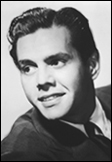 March 2, 1917–Actor and orchestra leader, Desi Arnaz, is born Desiderio Alberto Arnaz y de Acha III in Santiago, Cuba. He is best remembered for the role of Ricky Ricardo in the TV comedy series I Love Lucy, starring with Lucille Ball, to whom he was married at the time. With Ball, he founded Desilu Productions. At that time, most television programs were broadcast live, and as the largest markets were in New York, the rest of the country received only kinescope images. Karl Freund, Arnaz's cameraman, and even Arnaz himself have been credited with the development of the multiple-camera setup production style using adjacent sets in front of a live audience that became the standard for subsequent situation comedies. The use of film enabled every station around the country to broadcast high-quality images of the show. Arnaz was told that it would be impossible to allow an audience onto a sound stage, but he worked with Freund to design a set that would accommodate an audience, allow filming, and also adhere to fire and safety codes. Arnaz convinced the network executives to allow Desilu to cover all additional costs associated with filming, under the stipulation that Desilu owned and controlled all rights to the film. Arnaz's unprecedented arrangement is widely considered to be one of the shrewdest deals in television history. As a result of his foresight, Desilu reaped the profits from all reruns of the series. Desilu also produced The Andy Griffith Show, The Dick Van Dyke Show, The Lucy Show, and Star Trek. Arnaz appeared in the films Too Many Girls, Father Takes a Wife, Four Jacks and a Jill, The Navy Comes Through, Bataan, The Long Long Trailer, and Forever, Darling. His father was Santiago's youngest mayor and also served in the Cuban House of Representatives. His maternal grandfather was Alberto de Acha, an executive at Bacardi Rum. His children (with Lucille Ball) are actress, Lucie Arnaz, and actor, Desi Arnaz, Jr. March 2, 1917–Actor and orchestra leader, Desi Arnaz, is born Desiderio Alberto Arnaz y de Acha III in Santiago, Cuba. He is best remembered for the role of Ricky Ricardo in the TV comedy series I Love Lucy, starring with Lucille Ball, to whom he was married at the time. With Ball, he founded Desilu Productions. At that time, most television programs were broadcast live, and as the largest markets were in New York, the rest of the country received only kinescope images. Karl Freund, Arnaz's cameraman, and even Arnaz himself have been credited with the development of the multiple-camera setup production style using adjacent sets in front of a live audience that became the standard for subsequent situation comedies. The use of film enabled every station around the country to broadcast high-quality images of the show. Arnaz was told that it would be impossible to allow an audience onto a sound stage, but he worked with Freund to design a set that would accommodate an audience, allow filming, and also adhere to fire and safety codes. Arnaz convinced the network executives to allow Desilu to cover all additional costs associated with filming, under the stipulation that Desilu owned and controlled all rights to the film. Arnaz's unprecedented arrangement is widely considered to be one of the shrewdest deals in television history. As a result of his foresight, Desilu reaped the profits from all reruns of the series. Desilu also produced The Andy Griffith Show, The Dick Van Dyke Show, The Lucy Show, and Star Trek. Arnaz appeared in the films Too Many Girls, Father Takes a Wife, Four Jacks and a Jill, The Navy Comes Through, Bataan, The Long Long Trailer, and Forever, Darling. His father was Santiago's youngest mayor and also served in the Cuban House of Representatives. His maternal grandfather was Alberto de Acha, an executive at Bacardi Rum. His children (with Lucille Ball) are actress, Lucie Arnaz, and actor, Desi Arnaz, Jr.
Read the complete history of March 2
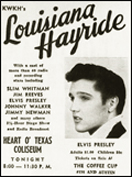 March 3, 1955–Elvis Presley makes his first TV appearance on Louisiana Hayride. The Hayride was presented weekly from 1948 until 1960, at the Shreveport Municipal Auditorium (its present-day location is 705 Elvis Presley Boulevard in Shreveport, Louisiana). It is akin to Shreveport's temporary alternative to the permanent Grand Ole Opry of Nashville, Tennessee. The Blue Moon Boys are formed by Presley (guitarist Scotty Moore and bassist Bill Black) for the "Louisiana Hayride" tour. Elvis’ appearance on the show prompts promoters to send him to New York City to audition for the immensely popular and career-making Arthur Godfrey’s Talent Scouts program. Talent coordinators and Godfrey are said to have passed on Elvis appearing on the show. Not much later, he was tossed out of the Grand Ole Opry as well, and told to “go back to driving a truck.” In a little over a year, however, the nation would be caught up in "Presleymania." March 3, 1955–Elvis Presley makes his first TV appearance on Louisiana Hayride. The Hayride was presented weekly from 1948 until 1960, at the Shreveport Municipal Auditorium (its present-day location is 705 Elvis Presley Boulevard in Shreveport, Louisiana). It is akin to Shreveport's temporary alternative to the permanent Grand Ole Opry of Nashville, Tennessee. The Blue Moon Boys are formed by Presley (guitarist Scotty Moore and bassist Bill Black) for the "Louisiana Hayride" tour. Elvis’ appearance on the show prompts promoters to send him to New York City to audition for the immensely popular and career-making Arthur Godfrey’s Talent Scouts program. Talent coordinators and Godfrey are said to have passed on Elvis appearing on the show. Not much later, he was tossed out of the Grand Ole Opry as well, and told to “go back to driving a truck.” In a little over a year, however, the nation would be caught up in "Presleymania."
Read the complete history of March 3
March 4, 1966–London's Evening Standard publishes Maureen Cleeve's interview with John Lennon that contains his soon-to-be-distorted "Beatles more popular than Jesus" remarks. Lennon said: "Christianity will go. It will vanish and shrink. I needn't argue that. I'm right and will be proved right. We're more popular than Jesus right now. I don’t know which will go first, rock and roll or Christianity. Jesus was all right, but his disciples were thick and ordinary. It’s them twisting it that ruins it for me." Although Lennon was making a comment about the irrelevance of organized religion to many contemporary young people, most conservatives interpret his statement as an arrogant insult. No one in the U.K. is particularly shocked or offended, but when the remarks (quoted out of context) reach America, conservatives (particularly those in southern states) go off the deep end and start bonfires for the burning of Beatles records, magazines, bubblegum cards, books, posters, and other paraphernalia. The hostile atmosphere surrounding The Beatles' final concert tour of the U.S. has much to do with their decision to quit touring altogether.
Read the complete history of March 4
 March 5, 1996–Character actor, Whit Bissell, dies of Parkinson's disease in Woodland Hills, California, at age 86. Bissell appeared in hundreds of films and television show episodes as a prominent character actor. He was cast in The Lone Ranger, You Are There, Father Knows Best, Playhouse 90, The Millionaire, Sea Hunt, One Step Beyond, The Real McCoys, Rawhide, Route 66, Maverick, The Rifleman, Alfred Hitchcock Presents, Tales of Wells Fargo, Bonanza, Hawaiian Eye, The Donna Reed Show, The Outer Limits, Kraft Suspense Theatre, Wagon Train, The Virginian, The Fugitive, Peyton Place, Perry Mason, Voyage to the Bottom of the Sea, Lassie, The Man from U.N.C.L.E., I Dream of Jeannie, The Time Tunnel, Star Trek, The Mod Squad, Land of the Giants, Walt Disney's Wonderful World of Color, Marcus Welby, M.D., Ironside, McCloud, Police Story, Kojak, The Incrediable Hulk, Hart to Hart, and Falcon Crest. He appeared in the films He Walked by Night, Lost Continent, Creature from the Black Lagoon, The Caine Mutiny, Target Earth, Not as a Stranger, The Desperate Hours, Invasion of the Body Snatchers, The Young Stranger, Gunfight at the O.K. Corral, I Was a Teenage Werewolf, The Defiant Ones, Monster on the Campus, Never So Few, The Time Machine, The Magnificent Seven, Birdman of Alcatraz, Spencer’s Mountain, Hud, Seven Days in May, Advance to the Rear, Where Love Has Gone, The Hallelujah Trail, 5 Card Stud, Airport, and Soylent Green. March 5, 1996–Character actor, Whit Bissell, dies of Parkinson's disease in Woodland Hills, California, at age 86. Bissell appeared in hundreds of films and television show episodes as a prominent character actor. He was cast in The Lone Ranger, You Are There, Father Knows Best, Playhouse 90, The Millionaire, Sea Hunt, One Step Beyond, The Real McCoys, Rawhide, Route 66, Maverick, The Rifleman, Alfred Hitchcock Presents, Tales of Wells Fargo, Bonanza, Hawaiian Eye, The Donna Reed Show, The Outer Limits, Kraft Suspense Theatre, Wagon Train, The Virginian, The Fugitive, Peyton Place, Perry Mason, Voyage to the Bottom of the Sea, Lassie, The Man from U.N.C.L.E., I Dream of Jeannie, The Time Tunnel, Star Trek, The Mod Squad, Land of the Giants, Walt Disney's Wonderful World of Color, Marcus Welby, M.D., Ironside, McCloud, Police Story, Kojak, The Incrediable Hulk, Hart to Hart, and Falcon Crest. He appeared in the films He Walked by Night, Lost Continent, Creature from the Black Lagoon, The Caine Mutiny, Target Earth, Not as a Stranger, The Desperate Hours, Invasion of the Body Snatchers, The Young Stranger, Gunfight at the O.K. Corral, I Was a Teenage Werewolf, The Defiant Ones, Monster on the Campus, Never So Few, The Time Machine, The Magnificent Seven, Birdman of Alcatraz, Spencer’s Mountain, Hud, Seven Days in May, Advance to the Rear, Where Love Has Gone, The Hallelujah Trail, 5 Card Stud, Airport, and Soylent Green.
Read the complete history of March 5
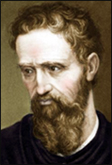 March 6, 1475–Sculptor, painter, and poet, Michelangelo, is born Michelangelo di Lodovico Buonarroti Simoni in Caprese near Arezzo, Republic of Florence (present-day Tuscany, Italy). Many of his works in painting, sculpture, and architecture remain among the most famous and influential in history. In the late 1490s, he went to Rome, where he was able to examine many newly unearthed statues and ruins. In 1504, he completed one of his best-known statues, the huge marble “David,” which became the symbol of the city of Florence, Italy. The following year, he was commissioned by Pope Julius the Second to paint the frescoes of the Sistine Chapel ceiling. For four years, Michelangelo lay on his back on scaffolding, depicting nine scenes from the Book of Genesis, with paint and fresh plaster dripping onto his face. Michelangelo was also one of the developers of the Mannerist Style, which was to become the next major movement in art following the Renaissance. March 6, 1475–Sculptor, painter, and poet, Michelangelo, is born Michelangelo di Lodovico Buonarroti Simoni in Caprese near Arezzo, Republic of Florence (present-day Tuscany, Italy). Many of his works in painting, sculpture, and architecture remain among the most famous and influential in history. In the late 1490s, he went to Rome, where he was able to examine many newly unearthed statues and ruins. In 1504, he completed one of his best-known statues, the huge marble “David,” which became the symbol of the city of Florence, Italy. The following year, he was commissioned by Pope Julius the Second to paint the frescoes of the Sistine Chapel ceiling. For four years, Michelangelo lay on his back on scaffolding, depicting nine scenes from the Book of Genesis, with paint and fresh plaster dripping onto his face. Michelangelo was also one of the developers of the Mannerist Style, which was to become the next major movement in art following the Renaissance.
Read the complete history of March 6
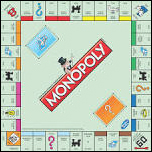 March 7, 1933–The game of "Monopoly" is invented by Charles Darrow. He later sold his rights to the game to Parker Brothers and became a millionaire at age 46. The game was developed as a way to demonstrate that an economy which rewards wealth creation is better than one in which monopolists work under few constraints, and to promote the economic theories of Henry George and his ideas about taxation. Players move around the game board buying, trading, or selling properties, developing their properties with houses and hotels, and collecting rent from their opponents, with the goal being to drive them all into bankruptcy, leaving one monopolist in control of the economy. The Monopoly game board consists of 40 spaces containing 28 properties: (22 streets grouped into eight color groups), four railroads, and two utilities), three Chance spaces, three Community Chest spaces, a Luxury Tax space, an Income Tax space, and the four corner squares (GO, In Jail/Just Visiting, Free Parking, and Go to Jail. Since the board game was first commercially sold in the 1930s, it has become a part of popular world culture, having been locally licensed in more than 103 countries and printed in more than 37 languages. Monopoly was first published by Parker Brothers in 1935. It is now owned and produced by the American game and toy company Hasbro. March 7, 1933–The game of "Monopoly" is invented by Charles Darrow. He later sold his rights to the game to Parker Brothers and became a millionaire at age 46. The game was developed as a way to demonstrate that an economy which rewards wealth creation is better than one in which monopolists work under few constraints, and to promote the economic theories of Henry George and his ideas about taxation. Players move around the game board buying, trading, or selling properties, developing their properties with houses and hotels, and collecting rent from their opponents, with the goal being to drive them all into bankruptcy, leaving one monopolist in control of the economy. The Monopoly game board consists of 40 spaces containing 28 properties: (22 streets grouped into eight color groups), four railroads, and two utilities), three Chance spaces, three Community Chest spaces, a Luxury Tax space, an Income Tax space, and the four corner squares (GO, In Jail/Just Visiting, Free Parking, and Go to Jail. Since the board game was first commercially sold in the 1930s, it has become a part of popular world culture, having been locally licensed in more than 103 countries and printed in more than 37 languages. Monopoly was first published by Parker Brothers in 1935. It is now owned and produced by the American game and toy company Hasbro.
Read the complete history of March 7
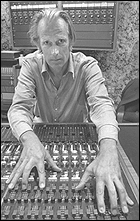 March 8, 2016–Record producer, Sir George Martin, dies in his sleep at his home in Wiltshire, England, at age 90. As producer for The Beatles from their first recording to their last, he has been referred to as the "Fifth Beatle." His career spanned more than six decades of work in music, film, television, and live performance. Martin had 30 #1 hit singles in the United Kingdom and 23 #1 hits in the United States. Martin produced comedy and novelty records in the early 1950s, working with Peter Sellers, Spike Milligan, and Bernard Cribbins, among others. The Beatles auditioned for Martin on June 6, 1962, in studio three at Abbey Road studios. Ron Richards and his engineer, Norman Smith, recorded four songs, which Martin (who was not present during the recording) listened to at the end of the session. The verdict was not promising, however, as Richards complained about Pete Best's drumming, and Martin thought their original songs were simply not good enough. Martin asked the individual Beatles if there was anything they personally did not like, to which George Harrison replied, "Well, there's your tie, for a start." That was the turning point, according to Smith, as John Lennon and Paul McCartney joined in with jokes and comic wordplay, that made Martin think that he should sign them to a contract for their wit alone. Martin produced recordings for many other artists, including contemporaries of The Beatles, such as Matt Monro, Cilla Black, Gerry & The Pacemakers, Billy J. Kramer & the Dakotas, The Fourmost, America, Jeff Beck, John McLaughlin Neil Sedaka, Kenny Rogers, Cheap Trick, Elton John, Little River Band, and Celine Dion. March 8, 2016–Record producer, Sir George Martin, dies in his sleep at his home in Wiltshire, England, at age 90. As producer for The Beatles from their first recording to their last, he has been referred to as the "Fifth Beatle." His career spanned more than six decades of work in music, film, television, and live performance. Martin had 30 #1 hit singles in the United Kingdom and 23 #1 hits in the United States. Martin produced comedy and novelty records in the early 1950s, working with Peter Sellers, Spike Milligan, and Bernard Cribbins, among others. The Beatles auditioned for Martin on June 6, 1962, in studio three at Abbey Road studios. Ron Richards and his engineer, Norman Smith, recorded four songs, which Martin (who was not present during the recording) listened to at the end of the session. The verdict was not promising, however, as Richards complained about Pete Best's drumming, and Martin thought their original songs were simply not good enough. Martin asked the individual Beatles if there was anything they personally did not like, to which George Harrison replied, "Well, there's your tie, for a start." That was the turning point, according to Smith, as John Lennon and Paul McCartney joined in with jokes and comic wordplay, that made Martin think that he should sign them to a contract for their wit alone. Martin produced recordings for many other artists, including contemporaries of The Beatles, such as Matt Monro, Cilla Black, Gerry & The Pacemakers, Billy J. Kramer & the Dakotas, The Fourmost, America, Jeff Beck, John McLaughlin Neil Sedaka, Kenny Rogers, Cheap Trick, Elton John, Little River Band, and Celine Dion.
Read the complete history of March 8
 March 9, 1959–The Barbie doll, made by Mattel, debuts at the American International Toy Fair in New York. The first Barbie doll wore a black and white zebra striped swimsuit and signature topknot ponytail, and was available as either a blonde or brunette. The doll was marketed as a "Teen-age Fashion Model," with her clothes created by Mattel fashion designer, Charlotte Johnson. The first Barbie dolls were manufactured in Japan, with their clothes hand-stitched by Japanese homeworkers. Around 350,000 Barbie dolls were sold during the first year of production. The first Barbie, referred to as a No. 1 Ponytail, is a collector’s item and sells for thousands of dollars today. American businesswoman, Ruth Handler, is credited with the creation of the doll using a German doll called Bild Lilli as her inspiration, and naming the doll after her daughter, Barbara. In 1964, Mattel bought Greiner & Hausser's copyright and patent rights for the Bild-Lilli doll for $21,600. The standard range of Barbie dolls and related accessories are manufactured to approximately 1/6 scale, which is also known as playscale. The standard dolls are approximately 11.5 inches tall. Barbie has been an important part of the toy fashion doll market for over 50 years. Mattel has sold over a billion Barbie dolls, making it the company’s largest and most profitable line. Barbie was one of the first toys to have a marketing strategy based extensively on television advertising, which has been copied widely by other toys. Mattel claims that three Barbie dolls are sold every second. March 9, 1959–The Barbie doll, made by Mattel, debuts at the American International Toy Fair in New York. The first Barbie doll wore a black and white zebra striped swimsuit and signature topknot ponytail, and was available as either a blonde or brunette. The doll was marketed as a "Teen-age Fashion Model," with her clothes created by Mattel fashion designer, Charlotte Johnson. The first Barbie dolls were manufactured in Japan, with their clothes hand-stitched by Japanese homeworkers. Around 350,000 Barbie dolls were sold during the first year of production. The first Barbie, referred to as a No. 1 Ponytail, is a collector’s item and sells for thousands of dollars today. American businesswoman, Ruth Handler, is credited with the creation of the doll using a German doll called Bild Lilli as her inspiration, and naming the doll after her daughter, Barbara. In 1964, Mattel bought Greiner & Hausser's copyright and patent rights for the Bild-Lilli doll for $21,600. The standard range of Barbie dolls and related accessories are manufactured to approximately 1/6 scale, which is also known as playscale. The standard dolls are approximately 11.5 inches tall. Barbie has been an important part of the toy fashion doll market for over 50 years. Mattel has sold over a billion Barbie dolls, making it the company’s largest and most profitable line. Barbie was one of the first toys to have a marketing strategy based extensively on television advertising, which has been copied widely by other toys. Mattel claims that three Barbie dolls are sold every second.
 Read the complete history of March 9 Read the complete history of March 9
March 10, 1942–Wilbur Scoville, inventor of the Scoville scale for pepper heat, dies in Gainesville, Florida, at age 77. He devised the test and scale in 1912, while working at the Parke-Davis pharmaceutical company to measure pungency, "spiciness" or "heat," of various chili peppers in heat units (SHU), a function of capsaicin concentration. Capsaicin is one of many related chemicals, collectively called capsaicinoids. Unlike methods based on high-performance liquid chromatography, the Scoville scale is a subjective measurement dependent on the capsaicin sensitivity of testers, and so is not a precise or accurate method to measure capsaicinoid concentration. The chilis with the highest rating on the Scoville scale exceed one million Scoville units, and include specimens of naga jolokia or bhut jolokia and its cultivar, the "ghost chili," which does not have official cultivar status. The Dragon's Breath (chili pepper) is currently the highest rated pepper in the world, while the common Bell Pepper is rated 0.
Read the complete history of March 10
 March 11, 2011–Japan is struck by the most powerful earthquake to hit the island nation in recorded history. The 8.9 magnitude temblor, which was centered near the east coast of Japan, killed hundreds of people, caused the formation of 30-foot walls of water that swept across rice fields, engulfed entire towns, dragged houses onto highways, and tossed cars and boats around like toys. Some waves reached six miles inland in Miyagi Prefecture on Japan's east coast. The nuclear power plant at Fukushima would later be severely damaged in the tsunami that followed the earthquake. It would prove to be a worldwide hazard, as radiation would begin to pour from the damaged containers. Millions of people watched the disaster take place live on satellite TV. March 11, 2011–Japan is struck by the most powerful earthquake to hit the island nation in recorded history. The 8.9 magnitude temblor, which was centered near the east coast of Japan, killed hundreds of people, caused the formation of 30-foot walls of water that swept across rice fields, engulfed entire towns, dragged houses onto highways, and tossed cars and boats around like toys. Some waves reached six miles inland in Miyagi Prefecture on Japan's east coast. The nuclear power plant at Fukushima would later be severely damaged in the tsunami that followed the earthquake. It would prove to be a worldwide hazard, as radiation would begin to pour from the damaged containers. Millions of people watched the disaster take place live on satellite TV.
Read the complete history of March 11
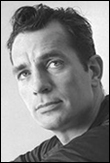 March 12, 1922–American beat writer, Jack Kerouac, is born Jean Louis Kerouac in Lowell, Massachusetts. Kerouac published his first novel The Town and the City in 1950. He was strongly influenced in his writing by others of the Beat generation, including his friends, William Burroughs and Allen Ginsberg. His best-known work, On the Road, was inspired by a cross-country trip taken while under the influence of drugs and drink. His novel The Dharma Bums, which describes a mountain climbing trip he and poet, Gary Snyder, took in Yosemite, contributed to popularizing Zen Buddhism as a philosophy for bohemian artists in America. In all, Kerouac published over 20 books, among them The Sea Is My Brother, And the Hippos Were Boiled in Their Tanks, The Subterraneans, Doctor Sax, Book of Dreams, Lonesome Traveler, Big Sur, Desolation Angels, Satori in Paris, and Orpheus Emerged. March 12, 1922–American beat writer, Jack Kerouac, is born Jean Louis Kerouac in Lowell, Massachusetts. Kerouac published his first novel The Town and the City in 1950. He was strongly influenced in his writing by others of the Beat generation, including his friends, William Burroughs and Allen Ginsberg. His best-known work, On the Road, was inspired by a cross-country trip taken while under the influence of drugs and drink. His novel The Dharma Bums, which describes a mountain climbing trip he and poet, Gary Snyder, took in Yosemite, contributed to popularizing Zen Buddhism as a philosophy for bohemian artists in America. In all, Kerouac published over 20 books, among them The Sea Is My Brother, And the Hippos Were Boiled in Their Tanks, The Subterraneans, Doctor Sax, Book of Dreams, Lonesome Traveler, Big Sur, Desolation Angels, Satori in Paris, and Orpheus Emerged.
Read the complete history of March 12
March 13, 1958–The Recording Industry Association of America (RIAA) launches its Gold Award Program to honor artists with outstanding sales. One million units sold of a single 45 rpm record earned Gold status. In 1976, the Platinum Award was introduced for singles which sold two million units. Today, the single awards are given at the half-million for Gold and one million for Platinum for sales or downloads, with the same award qualifications for album-length releases. The Diamond Award (album sales of over 10 million) was introduced in 1999. The original Gold and Silver record awards were presented to artists by their own record companies to publicize their sales achievements. The first silver disc was awarded by Regal Zonophone to George Formby in December 1937, for sales of 100,000 copies of The Window Cleaner. The first gold disc was awarded by RCA Victor (under division imprint Bluebird Records) to Glenn Miller and His Orchestra in February 1942, celebrating the sale of 1.2 million copies of the single Chattanooga Choo Choo. Another example of a company award is the gold record awarded to Elvis Presley in 1956, for one million units sold of his single Don't Be Cruel. The first gold record for an LP was awarded by RCA Victor to Harry Belafonte in 1957, for the album Calypso.
Read the complete history of March 13
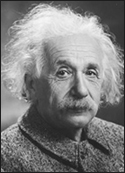 March 14, 1879–Physicist, Albert Einstein, is born in Ulm, Kingdom of Württemberg, German Empire. In 1905, while he was still working as a patent examiner, he published four papers in Germany's leading physics journal. Each one dealt with a separate area of physics, and each one broke new ground in its field. He did not win the Nobel Prize for the paper he had written about the Theory of Relativity: it was for one of the other papers, a description of the photoelectric effect. Einstein's intellectual achievements and originality have made the word "Einstein" synonymous with genius, so that in a sense he may be regarded as the greatest genius who ever lived. March 14, 1879–Physicist, Albert Einstein, is born in Ulm, Kingdom of Württemberg, German Empire. In 1905, while he was still working as a patent examiner, he published four papers in Germany's leading physics journal. Each one dealt with a separate area of physics, and each one broke new ground in its field. He did not win the Nobel Prize for the paper he had written about the Theory of Relativity: it was for one of the other papers, a description of the photoelectric effect. Einstein's intellectual achievements and originality have made the word "Einstein" synonymous with genius, so that in a sense he may be regarded as the greatest genius who ever lived.
Read the complete history of March 14
March 15, BC 44–Julius Caesar, Dictator of the Roman Republic, is stabbed to death, at age 55, by Marcus Junius Brutus, Gaius Cassius Longinus, Decimus Junius Brutus, and several other Roman senators on the Ides of March.
Read the complete history of March 15
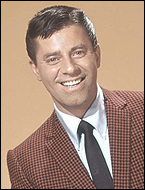 March 16, 1926–Comedian-actor-director, Jerry Lewis, is born Joseph Levitch in Newark, New Jersey. Aside from his work with the most popular comedy team of all time, Martin & Lewis (with singer-actor Dean Martin), he also had a successful career as an actor and producer. He recorded an album entitled, Jerry Lewis Just Sings, which featured the hit Rock-A-Bye Your Baby with a Dixie Melody. He is one of the most famous philanthropists of the 20th century through his work with the Muscular Dystrophy Association, serving as host of their 48-hour annual Labor Day Telethon since the early 1960s. He appeared in the films The Stooge, Scared Stiff, The Caddy, Living It Up, Artists and Models, Hollywood or Bust, The Delicate Delinquent, Rock-A-Bye Baby, The Bellboy, Cinderfella, The Ladies Man, The Errand Boy, The Nutty Professor, Who’s Minding the Store?, The Pasty, The Disorderly Orderly, Boeing Boeing, Three on a Couch, Way... Way Out, The Big Mouth, Hardly Working, The King of Comedy, Cracking Up, and Arizona Dream. His son is musician, Gary Lewis, of the pop group Gary Lewis and the Playboys. March 16, 1926–Comedian-actor-director, Jerry Lewis, is born Joseph Levitch in Newark, New Jersey. Aside from his work with the most popular comedy team of all time, Martin & Lewis (with singer-actor Dean Martin), he also had a successful career as an actor and producer. He recorded an album entitled, Jerry Lewis Just Sings, which featured the hit Rock-A-Bye Your Baby with a Dixie Melody. He is one of the most famous philanthropists of the 20th century through his work with the Muscular Dystrophy Association, serving as host of their 48-hour annual Labor Day Telethon since the early 1960s. He appeared in the films The Stooge, Scared Stiff, The Caddy, Living It Up, Artists and Models, Hollywood or Bust, The Delicate Delinquent, Rock-A-Bye Baby, The Bellboy, Cinderfella, The Ladies Man, The Errand Boy, The Nutty Professor, Who’s Minding the Store?, The Pasty, The Disorderly Orderly, Boeing Boeing, Three on a Couch, Way... Way Out, The Big Mouth, Hardly Working, The King of Comedy, Cracking Up, and Arizona Dream. His son is musician, Gary Lewis, of the pop group Gary Lewis and the Playboys.
Read the complete history of March 16
March 17, 460–Saint Patrick, Irish Bishop and missionary, dies in Saul, County Down, Ireland. The first St. Patrick's Day Parade is held in New York City in 1762, by Irish soldiers serving in the British Army.
Read the complete history of March 17
 March 18, 1877–Psychic healer, Edgar Cayce, is born in Hopkinsville, Kentucky. Nicknamed “The Sleeping Prophet,” Cayce has been called the “father of holistic medicine” and is perhaps the most documented psychic of the 20th century. He was an American Christian mystic who answered questions on subjects as varied as healing, reincarnation, wars, Atlantis, and future events while in a trance. Throughout his life, Cayce was drawn to church as a member of the Disciples of Christ. He read the Bible once a year every year, taught at Sunday school, and recruited missionaries. He said he could see auras around people, spoke to angels, and heard voices of departed relatives. During one period, Cayce directed his activities to provide readings centered around health. The remedies that were channeled often involved the use of unusual electrotherapy, ultraviolet light, diet, massage, gemstones, less mental work, and more relaxation in sand on the beach. During the Depression years, his readings were about dreams, coincidence (synchronicity), developing intuition, karma, the akashic records, astrology, past-life relationships, soul mates, and other esoteric subjects. Hundreds of books have been published about these readings. Some consider him the true founder and a principal source of the most characteristic beliefs of the New Age movement. March 18, 1877–Psychic healer, Edgar Cayce, is born in Hopkinsville, Kentucky. Nicknamed “The Sleeping Prophet,” Cayce has been called the “father of holistic medicine” and is perhaps the most documented psychic of the 20th century. He was an American Christian mystic who answered questions on subjects as varied as healing, reincarnation, wars, Atlantis, and future events while in a trance. Throughout his life, Cayce was drawn to church as a member of the Disciples of Christ. He read the Bible once a year every year, taught at Sunday school, and recruited missionaries. He said he could see auras around people, spoke to angels, and heard voices of departed relatives. During one period, Cayce directed his activities to provide readings centered around health. The remedies that were channeled often involved the use of unusual electrotherapy, ultraviolet light, diet, massage, gemstones, less mental work, and more relaxation in sand on the beach. During the Depression years, his readings were about dreams, coincidence (synchronicity), developing intuition, karma, the akashic records, astrology, past-life relationships, soul mates, and other esoteric subjects. Hundreds of books have been published about these readings. Some consider him the true founder and a principal source of the most characteristic beliefs of the New Age movement.
Read the complete history of March 18
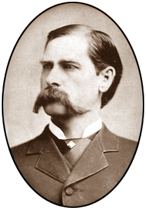 March 19, 1848–Frontiersman and legendary Western lawman, Wyatt Earp, is born Wyatt Berry Stapp Earp in Monmouth, Warren County, Illinois. Earp was at different times in his life a city policeman, county sheriff, teamster, buffalo hunter, bouncer, saloon-keeper, gambler, brothel owner, pimp, miner, and boxing referee. He spent his early life in Iowa. He landed in the cattle boomtown of Wichita, Kansas, where he became a deputy city marshal for one year and developed a solid reputation as a lawman. He then moved on to Dodge City, Kansas, where he met Doc Holliday. He moved to Tombstone, Arizona, with his brothers in 1879, where the famous “Gunfight at the O.K. Corral” took place. Wyatt was never wounded in any of the gunfights he took part in, which only added to his mystique. In modern times, Wyatt Earp has become synonymous of the stereotypical image of a lawman, and is a symbol of American frontier justice. March 19, 1848–Frontiersman and legendary Western lawman, Wyatt Earp, is born Wyatt Berry Stapp Earp in Monmouth, Warren County, Illinois. Earp was at different times in his life a city policeman, county sheriff, teamster, buffalo hunter, bouncer, saloon-keeper, gambler, brothel owner, pimp, miner, and boxing referee. He spent his early life in Iowa. He landed in the cattle boomtown of Wichita, Kansas, where he became a deputy city marshal for one year and developed a solid reputation as a lawman. He then moved on to Dodge City, Kansas, where he met Doc Holliday. He moved to Tombstone, Arizona, with his brothers in 1879, where the famous “Gunfight at the O.K. Corral” took place. Wyatt was never wounded in any of the gunfights he took part in, which only added to his mystique. In modern times, Wyatt Earp has become synonymous of the stereotypical image of a lawman, and is a symbol of American frontier justice.
Read the complete history of March 19
March 20, 1969–John Lennon and Yoko Ono are married at the British Consulate in Gibraltar, by magistrate Cecile Wheeler. Beatles aide, Peter Brown, is there to act as witness. They had flown from Paris, France, to Gibraltar, early in the morning, landing on the “rock” at 8:30 a.m. The marriage took place at 9:00 a.m. After the ceremony, they announce to the press that they will be staging many “events” and “happenings.”
Read the complete history of March 20
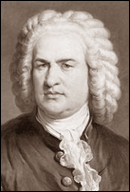 March 21, 1685–Composer, Johann Sebastian Bach, is born in Eisenach, Thuringia. The 11th child of a couple who died by the time Bach was 10, he was raised by his brother, Johann Christian Bach, who taught him organ and clavier. Bach worked as an organist in Thuringia and composed sacred music; he was court organist and a member of the court orchestra in Weimer; then, for the last 27 years of his life, he was a cantor, a church music director, and choir director in Liepzig. In his own lifetime he was such a renowned organist, that his talent for composition was overlooked, and he was not fully recognized until at least 50 years after his death. March 21, 1685–Composer, Johann Sebastian Bach, is born in Eisenach, Thuringia. The 11th child of a couple who died by the time Bach was 10, he was raised by his brother, Johann Christian Bach, who taught him organ and clavier. Bach worked as an organist in Thuringia and composed sacred music; he was court organist and a member of the court orchestra in Weimer; then, for the last 27 years of his life, he was a cantor, a church music director, and choir director in Liepzig. In his own lifetime he was such a renowned organist, that his talent for composition was overlooked, and he was not fully recognized until at least 50 years after his death.
Read the complete history of March 21
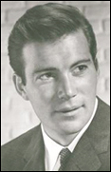 March 22, 1931–Actor, William Shatner, is born in Côte-Saint-Luc, Montreal, Quebec, Canada. He is best known for the role of Captain Kirk of the sci-fi TV series Star Trek. He also starred in the action TV series T.J. Hooker. He was cast in many other TV shows, including Howdy Doody, Playhouse 90, The United States Steel Hour, Alfred Hitchcock Presents, One Step Beyond, Thriller, Naked City, Twilight Zone, 77 Sunset Strip, Route 66, The Outer Limits, The Fugitive, The Big Valley, Dr. Kildare, Gunsmoke, The Virginian, Hawaii Five-O, Mission: Impossible, Kung Fu, Columbo, and 3rd Rock from the Sun. He appeared in the films The Butler’s Night Off, The Brothers Karamazov, The Explosive Generation, Judgment at Nuremberg, The Intruder, The Outrage, White Comanche, Impulse, Big Bad Mama, and Kingdom of the Spiders. March 22, 1931–Actor, William Shatner, is born in Côte-Saint-Luc, Montreal, Quebec, Canada. He is best known for the role of Captain Kirk of the sci-fi TV series Star Trek. He also starred in the action TV series T.J. Hooker. He was cast in many other TV shows, including Howdy Doody, Playhouse 90, The United States Steel Hour, Alfred Hitchcock Presents, One Step Beyond, Thriller, Naked City, Twilight Zone, 77 Sunset Strip, Route 66, The Outer Limits, The Fugitive, The Big Valley, Dr. Kildare, Gunsmoke, The Virginian, Hawaii Five-O, Mission: Impossible, Kung Fu, Columbo, and 3rd Rock from the Sun. He appeared in the films The Butler’s Night Off, The Brothers Karamazov, The Explosive Generation, Judgment at Nuremberg, The Intruder, The Outrage, White Comanche, Impulse, Big Bad Mama, and Kingdom of the Spiders.
Read the complete history of March 22
March 23, 1924–Inventor, Bette Nesmith Graham, is born Bette Clair Mcmurray in Dallas, Texas. She was a secretarial typist, commercial artist, and the inventor of Liquid Paper. She began marketing her typewriter correction fluid as "Mistake Out" in 1956. Mistake Out started out operating at a small loss, with Nesmith's home doubling as company headquarters. As the product became an indispensable tool of the secretarial trade, Nesmith relocated production and shipping from her kitchen to a 10 x 26-foot portable metal structure in her backyard, where packaging, shipping, and production were centered. The name was later changed to Liquid Paper when she began her own company. In 1979, she sold Liquid Paper to the Gillette Corporation for $47.5 million. At the time, her company employed 200 people and made 25 million bottles of Liquid Paper per year. She was the mother of Michael Nesmith, country-rock singer and member of The Monkees. He inherited half of his mother's $50+ million estate.
Read the complete history of March 23
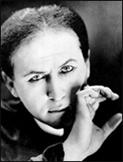 March 24, 1874–Magician and escape artist, Harry Houdini, is born Erich Weiss in Budapest, Hungary. He was an illusionist and stunt performer, noted for his sensational escape acts. Houdini's big break came in 1899, when he met manager Martin Beck in rural Woodstock, Illinois. Impressed by Houdini's handcuffs act, Beck advised him to concentrate on escape acts and booked him on the Orpheum vaudeville circuit. Within months, he was performing at the top vaudeville houses in the country. He toured England, Scotland, the Netherlands, Germany, France, and Russia. In 1913, Houdini introduced his most famous act, the Chinese Water Torture Cell, in which he was suspended upside-down in a locked glass-and-steel cabinet full to overflowing with water. The act required that Houdini hold his breath for more than three minutes. Houdini performed this escape for the rest of his career. March 24, 1874–Magician and escape artist, Harry Houdini, is born Erich Weiss in Budapest, Hungary. He was an illusionist and stunt performer, noted for his sensational escape acts. Houdini's big break came in 1899, when he met manager Martin Beck in rural Woodstock, Illinois. Impressed by Houdini's handcuffs act, Beck advised him to concentrate on escape acts and booked him on the Orpheum vaudeville circuit. Within months, he was performing at the top vaudeville houses in the country. He toured England, Scotland, the Netherlands, Germany, France, and Russia. In 1913, Houdini introduced his most famous act, the Chinese Water Torture Cell, in which he was suspended upside-down in a locked glass-and-steel cabinet full to overflowing with water. The act required that Houdini hold his breath for more than three minutes. Houdini performed this escape for the rest of his career.
Read the complete history of March 24
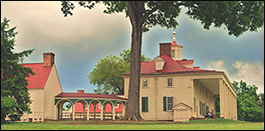 March 25, 1775–George Washington plants pecan trees (some of which still survive) at his home in Mount Vernon. The trees are a gift from Thomas Jefferson, who planted pecan trees (C. illinoinensis (Illinois nuts) in his nut orchard at his home, Monticello, in Virginia. Pecan trees may live and bear edible seeds for more than 300 years. The pecan (Carya illinoinensis) is a species of hickory native to Mexico and the southcentral and southeastern regions of the United States. The pecan tree is a large deciduous tree, growing to 66 to 131 feet in height, rarely to 144 feet. It typically has a spread of 39 to 75 feet, with a trunk up to 6.6 feet diameter. A 10-year-old sapling will stand about 16 feet tall. The leaves are alternate, 12 to 18 inches long, and pinnate with nine to 17 leaflets. Although wild pecans were well known among native and colonial Americans as a delicacy, the commercial growing of pecans in the United States did not begin until the 1880s. Today, the U.S. produces between 80% and 95% of the world's pecans, with an annual crop of 150-200 thousand tons from more than 10 million trees. The nut harvest for growers is typically around mid-October. March 25, 1775–George Washington plants pecan trees (some of which still survive) at his home in Mount Vernon. The trees are a gift from Thomas Jefferson, who planted pecan trees (C. illinoinensis (Illinois nuts) in his nut orchard at his home, Monticello, in Virginia. Pecan trees may live and bear edible seeds for more than 300 years. The pecan (Carya illinoinensis) is a species of hickory native to Mexico and the southcentral and southeastern regions of the United States. The pecan tree is a large deciduous tree, growing to 66 to 131 feet in height, rarely to 144 feet. It typically has a spread of 39 to 75 feet, with a trunk up to 6.6 feet diameter. A 10-year-old sapling will stand about 16 feet tall. The leaves are alternate, 12 to 18 inches long, and pinnate with nine to 17 leaflets. Although wild pecans were well known among native and colonial Americans as a delicacy, the commercial growing of pecans in the United States did not begin until the 1880s. Today, the U.S. produces between 80% and 95% of the world's pecans, with an annual crop of 150-200 thousand tons from more than 10 million trees. The nut harvest for growers is typically around mid-October.
Read the complete history of March 25
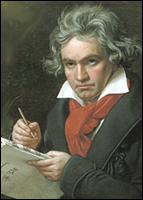 March 26, 1827–German composer, Ludwig van Beethoven, dies in Vienna, Austria, at age 56. He dies during a thunderstorm and there was a peal of thunder at the moment of death. There is dispute about the cause of Beethoven's death: alcoholic cirrhosis, syphilis, infectious hepatitis, lead poisoning, sarcoidosis, and Whipple's disease have all been proposed. Before and after his death, friends and visitors clipped locks of his hair, some of which have been preserved and subjected to additional analysis and have led to controversial assertions that Beethoven was accidentally poisoned to death by excessive doses of lead-based treatments administered under instruction from his doctor. An autopsy revealed significant liver damage, which may have been due to heavy alcohol consumption. Beethoven was a crucial figure in the transition between the Classical and Romantic eras in Western art music, and he remains one of the most famous and influential of all composers. His compositions include nine symphonies, five concertos for piano, 32 piano sonatas, and 16 string quartets. His best known piece of music is his 5th Symphony, simply called Beethoven’s 5th. March 26, 1827–German composer, Ludwig van Beethoven, dies in Vienna, Austria, at age 56. He dies during a thunderstorm and there was a peal of thunder at the moment of death. There is dispute about the cause of Beethoven's death: alcoholic cirrhosis, syphilis, infectious hepatitis, lead poisoning, sarcoidosis, and Whipple's disease have all been proposed. Before and after his death, friends and visitors clipped locks of his hair, some of which have been preserved and subjected to additional analysis and have led to controversial assertions that Beethoven was accidentally poisoned to death by excessive doses of lead-based treatments administered under instruction from his doctor. An autopsy revealed significant liver damage, which may have been due to heavy alcohol consumption. Beethoven was a crucial figure in the transition between the Classical and Romantic eras in Western art music, and he remains one of the most famous and influential of all composers. His compositions include nine symphonies, five concertos for piano, 32 piano sonatas, and 16 string quartets. His best known piece of music is his 5th Symphony, simply called Beethoven’s 5th.
Read the complete history of March 26
 March 27, 1790–The “modern” shoelace is invented in England. Shoelaces, also called shoestrings (U.S. English) or bootlaces (U.K. English), are a system commonly used to secure shoes, boots, and other footwear. They typically consist of a pair of strings or cords, one for each shoe, finished off at both ends with stiff sections, known as “aglets.” Each shoelace typically passes through a series of holes, eyelets, loops, or hooks on either side of the shoe. Loosening the lacing allows the shoe to open wide enough for the foot to be inserted or removed, while tightening the lacing and tying off the ends secures the foot within the shoe. Traditional shoelaces were made of leather, cotton, jute, hemp, or other materials used in the manufacture of rope. Shoelaces are typically tied off at the top of the shoe using a simple bow knot. Besides securing the shoe, this also takes up the length of shoelace exposed after tightening. The common bow consists of two half-knots tied one on top of the other, with the second half-knot looped in order to allow quick untying. When required, the knot can be readily loosened by pulling one or both of the loose ends. March 27, 1790–The “modern” shoelace is invented in England. Shoelaces, also called shoestrings (U.S. English) or bootlaces (U.K. English), are a system commonly used to secure shoes, boots, and other footwear. They typically consist of a pair of strings or cords, one for each shoe, finished off at both ends with stiff sections, known as “aglets.” Each shoelace typically passes through a series of holes, eyelets, loops, or hooks on either side of the shoe. Loosening the lacing allows the shoe to open wide enough for the foot to be inserted or removed, while tightening the lacing and tying off the ends secures the foot within the shoe. Traditional shoelaces were made of leather, cotton, jute, hemp, or other materials used in the manufacture of rope. Shoelaces are typically tied off at the top of the shoe using a simple bow knot. Besides securing the shoe, this also takes up the length of shoelace exposed after tightening. The common bow consists of two half-knots tied one on top of the other, with the second half-knot looped in order to allow quick untying. When required, the knot can be readily loosened by pulling one or both of the loose ends.
Read the complete history of March 27
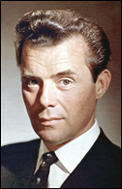 March 28, 1921–Actor, Dirk Bogarde, is born Derek Jules Gaspard Ulric Niven van den Bogaerde in West Hampstead, London, England. He was contracted to The Rank Organisation under the wing of the prolific independent film producer, Betty Box, who produced most of his early films and was instrumental in creating his matinée idol image. He appeared in the films Blackmailed, Hunted, They Who Dare, Doctor in the House, The Sleeping Tiger, Simba, Cast a Dark Shadow, A Tale of Two Cities, Libel, Song Without End, Victim, The Mind Benders, I Could Go On Singing, The Servant, Darling, Modesty Blaise, Accident, Oh! What a Lovely War, Justine, and A Bridge Too Far. March 28, 1921–Actor, Dirk Bogarde, is born Derek Jules Gaspard Ulric Niven van den Bogaerde in West Hampstead, London, England. He was contracted to The Rank Organisation under the wing of the prolific independent film producer, Betty Box, who produced most of his early films and was instrumental in creating his matinée idol image. He appeared in the films Blackmailed, Hunted, They Who Dare, Doctor in the House, The Sleeping Tiger, Simba, Cast a Dark Shadow, A Tale of Two Cities, Libel, Song Without End, Victim, The Mind Benders, I Could Go On Singing, The Servant, Darling, Modesty Blaise, Accident, Oh! What a Lovely War, Justine, and A Bridge Too Far.
Read the complete history of March 28
March 29, 1848–For the first time in recorded history, Niagara Falls stops flowing. An ice jam in the Niagara river above the rim of the falls causes the water to stop for 40 hours. No water (or at best a trickle) fell and waterwheels stopped, while mills and factories shut down for having no power. The enormous energy of Niagara Falls has long been recognized as a potential source of power. The first known effort to harness the waters was in 1759, when Daniel Joncaire built a small canal above the falls to power his sawmill. Augustus and Peter Porter purchased this area and all of American Falls in 1805, from the New York state government, and enlarged the original canal to provide hydraulic power for their gristmill and tannery. In 1853, the Niagara Falls Hydraulic Power and Mining Company was chartered, which eventually constructed the canals that would be used to generate electricity. In 1881, under the leadership of Jacob F. Schoellkopf, the Niagara River's first hydroelectric generating station was built. The water fell 86 feet and generated direct current electricity, which ran the machinery of local mills and lit up some of the village streets.
Read the complete history of March 29
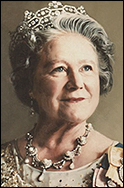 March 30, 2002–The Queen Mother of Great Britain dies in her sleep at Royal Lodge, Windsor, Berkshire, England, at age 101. At the time of her death, she was the longest-living member of the Royal Family in British history. She continued an active public life until just a few months before her death. She was the wife of King George VI and the mother of Queen Elizabeth II and Princess Margaret, Countess of Snowdon. She was Queen of the United Kingdom and the Dominions from her husband's accession in 1936, until his death in 1952, after which she was known as Queen Elizabeth The Queen Mother, to avoid confusion with her daughter. From the death of Queen Mary in 1953, Elizabeth was viewed as the matriarch of the British royal family. In her later years, she was a consistently popular member of the family, even when other members were suffering from low levels of public approval. March 30, 2002–The Queen Mother of Great Britain dies in her sleep at Royal Lodge, Windsor, Berkshire, England, at age 101. At the time of her death, she was the longest-living member of the Royal Family in British history. She continued an active public life until just a few months before her death. She was the wife of King George VI and the mother of Queen Elizabeth II and Princess Margaret, Countess of Snowdon. She was Queen of the United Kingdom and the Dominions from her husband's accession in 1936, until his death in 1952, after which she was known as Queen Elizabeth The Queen Mother, to avoid confusion with her daughter. From the death of Queen Mary in 1953, Elizabeth was viewed as the matriarch of the British royal family. In her later years, she was a consistently popular member of the family, even when other members were suffering from low levels of public approval.
Read the complete history of March 30
March 31, 1889–French engineer, Alexandre Gustave Eiffel, unfurls the French flag atop the Eiffel Tower on the Champ de Mars in Paris, France, officially marking its completion. The wrought iron lattace tower was built for the Paris Exhibition of 1889. The tower is 1,063 feet tall, about the same height as an 81-story building, and the tallest structure in Paris. Its base is square, measuring 410 feet on each side. It was initially criticized by some of France's leading artists and intellectuals for its design, but it has become a global cultural icon of France and one of the most recognizable structures in the world. The tower has three levels for visitors, with restaurants on the first and second levels. The top level's upper platform is 906 feet above the ground and is the highest observation deck accessible to the public in the European Union. The Eiffel Tower is the most-visited paid monument in the world with 6.91 million people ascending it in 2015.
Read the complete history of March 31
PHOTOS FROM TOP TO BOTTOM: The Remington Type-Writer; Desi Arnaz; an advertisement for Louisiana Hayride featuring Elvis Presley; Whit Bissell; Michelangelo; a Monopoly game board; Sir George Martin; the first Barbie doll (1959); chili peppers; the Fukushima tsunami of March 11, 2011; Jack Kerouac; Albert Einstein; Jerry Lewis; Edgar Cayce; Wyatt Earp; Johann Sebastian Bach; William Shatner; Harry Houdini; Ludwig van Beethoven; shoelaces; George Washington's home, Mount Vernon; Dirk Bogarde; and the Queen Mother of Great Britain.
|
|
 |
|
 |
|
 |
|
 |
|
|